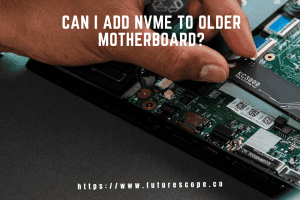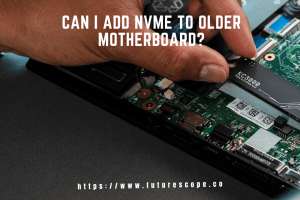What We Have Covered in This Article
Last Updated on September 6, 2017 by Editor Futurescope
Among the greatest technological advancement of the last 25 years, including wearable technology and CT scans, have basically changed the diagnosis and treatment of patients. They have also highly improved the training and education of medical practitioners. Augmented Reality (AR) concept is also a member of the list. As part of the global market that will expectedly reach a value of $1.5 billion by the year 2020, augmented reality has many benefits that will definitely transform the medical world. From assistance and providing real-time data during complicated surgical procedures to supporting administration and aftercare, the world has just started seeing the benefits.
What Is Augmented Reality?
Simply put, Augmented Reality is a new technology that is adding value to real life by overlapping and displaying digital media and information at any time period, such as 3D models and videos through camera view of tablets, smartphones, and personal computers or through wearable tech like smart glasses or viewfinder. It is not science fiction; it is already happening. Doctors and patients are using connected devices like tablets or smartphones to leverage the technology and add more valuable data to treatments. The many strides made in glasses and connected lenses will make the information access seamless in the near future.
How Can Augmented Reality Benefit both Patients & Doctor?
For patients, AR will highly improve their treatment quality. AR will reduce the risks related to minimally invasive surgery – which involves making of small incision in the skin of a patient followed by medical instruments insertion. The technology keeps important information handy for the surgeon. Earlier, the form of surgery needed monitors in operating rooms to display images and vital statistics delivered by endoscopic cameras. With AR, surgeons can wear smart glasses when performing a surgery and focus more on the task at hand. That minimizes risks and need for multitasking.
AR has also hugely affected patient education, which is important for effective disease prevention and treatment. Health professionals can now use AR apps to illustrate impacts of particular diseases. Studies have also proved that sensory experience is more effective during classes.
Moreover, painful medical procedures including taking blood are now more straightforward. A quick example: the widely used AccuVein (a handheld scanner which illuminates veins on the patient’s skin) is helping doctors and nurses locate veins when inserting needles.
The technology will also help enhance management of patients’ aftercare. Patients may need to continue with treatments after leaving the hospital for them to eradicate or manage a health issue successfully. It can be more challenging for older people in particular to keep track of the medication to take and the right time to take it. AR apps installed in the available smart glasses such as Google glass act as digital healthcare assistants. They will remind patients when to take their medicine, encourage them to exercise and eat better.
To ensure that patients receive quality care immediately they are admitted, administrative staff has to record, manage and access information as efficiently and as fast as possible. With augmented reality, they are able to save time, reduce overheads and improve the entire process while reducing chances of human error.
Augmented reality is helping doctors in their education and training. Trainee physicians can lift their heads from textbooks and visualize health issues in a better way. The technology will also help doctors diagnose and treat most medical conditions because they will easily access patients’ information and data faster.
Diagnostic & Treatment Applications of AR
With AR technologies, surgeons will highly improve the approaches to minimally invasive surgeries – the same applies to the complex surgical procedures. With faster access to information (without having to shift attention from a patient), surgeons will save more lives. Medical practitioners will keep vital statistics at the eye level during operations. AR also overlays enlarged 3D version of organs to increase surgeon’s field of view during complex surgical operations. Some technologies such as HoloLens will not only change how doctors learn the human anatomy but will help them conduct more effective diagnosis by overlaying imageries like CT scans onto the patient’s body. AR will also help detect and catch diseases earlier.
Best examples of augmented reality in medicine
Google Glass
Google Glass is here to help all the new mothers struggling with breastfeeding. Without any doubts, the product is more likely to revolutionize healthcare. Earlier in 2014, Small World (a small Melbourne office) conducted the product’s trials with Australian Breastfeeding Association, which effectively allowed all their telephone counselors to receive opinions of breastfeeding mothers. The counselors offered expert help to struggling mothers at any daytime, without the need of putting down the kid from their arms. With the mothers’ opinions consultations are in another level.
Nurses can find veins easier AccuVein
AccuVein, a start-up company, is now using augmented reality technology to make patients’ and nurses’ lives easier. Vinny Luciano, their marketing specialist has said that around 40% of intravenous injections (IV) will miss the vein during the first stick. Moreover, the number is higher with the elderly and children. AccuVein relies on augmented reality by using handheld scanners which projects over the patients’ skin. Luciano believes that nurses have used the product on around 10 million patients and finding the vein on the first off stick is around 3.5 times more likely. The technologies will assist healthcare professions and even extend their skills.
Pharmaceuticals can introduce more innovative drug
Sometimes, you will find yourself wondering how drugs work in our bodies. However, your desire to learn more about medicaments and pills is likely to reduce as you come across the boring undecipherable drug description. Augmented reality is likely to change that. With AR, patients can see how drugs work in their bodies. The technology employs 3D images to illustrate the working, something that eliminates the need of reading those long descriptions on bottles. Lab workers can also monitor all their experiments using augmented reality equipment. Even more, augmented reality is helpful in factories as workers can work without hands on training. The devices can tell them exactly what to do and the right way to do it.
ARnatomy can assist surgeons in the OR
Precision is vital when it comes to surgery. AR is now helping surgeons improve their efficiency in surgeries. AR healthcare applications can help them treat patients and save lives seamlessly when localizing a tumour in the liver or conducting minimally invasive procedures. Medsights Tech has already developed a software program that will test feasibility of augmented reality usage to make accurate 3-dimensional tumour reconstructions. The composite image reconstructing technology essentially empowers surgeons with better x-ray views, without exposure to radiation in the real time. The HoloAnatomy which uses HoloLens to display data-anatomical models represents the wonderful intuitive AR usage. It offers many benefits over the traditional methods.
Google’s digital contact lens can change how we look
Retinal implants and digital contact lenses have a greater potential in transforming the healthcare world. Retinal implants are likely to give vision to individuals who have already lost it and give humans supervision augmenting the things we can do. Digital contact lenses may revolutionize diabetes care and change our view on the world. Google has an aim of producing digital multisensory contact lenses that will measure our blood sugar levels. Then again, diabetes care involves rather side features, while digital contact lenses can augment reality. A quick example: you can turn the pages of an ebook by blinking your eyes.
LEGO
Most current devices including Microsoft Hololens are very far from offering perfect experience. However, that does not mean that we will never reach there. A better way of reaching there is getting used to the future trend when educating ourselves and our children. LEGO might be your kid’s most favorite toy. Your child will assemble the little LEGO parts from time to time into a new thing, creating cars, castles and complex cities (that is among the most important activities in the world). It will stimulate your creativity, fantasy and help you develop more skills for holistic vision and attention to details. A large percentage of the most recent videogames have attempted to recreate the LEGO in virtual spaces – including the Minecraft.
Some years ago, parents would complain that their children are doing nothing important other than sitting in front of screens. They believed that children would learn nothing about themselves and the environment with LEGO. That is untrue. LEGO enhances creativity and develops the way kids view the world surrounding them – in a different way. Augmented reality is likely to combine the advantages of building things in the real world and virtual imagination. That way, kids will understand what “real” is. They will also exploit all opportunities that augmented reality offers.
Vipaar
VIPAAR, which stands for virtual Interactive Presence in Augmented Realty, is fundamentally commercialising UAB-developed technology. That offers real-time two way interactive video conferencing. A built-in camera transmits images of surgical fields and the person on the other end can introduce his instruments or hands into the virtual field (surgical field). The surgeon in the operation room will see the hands and the instruments in a heads-up display and merged-realty environment. Surgeons can easily discuss cases in truly interactive fashions. It is different from video conference calls.









